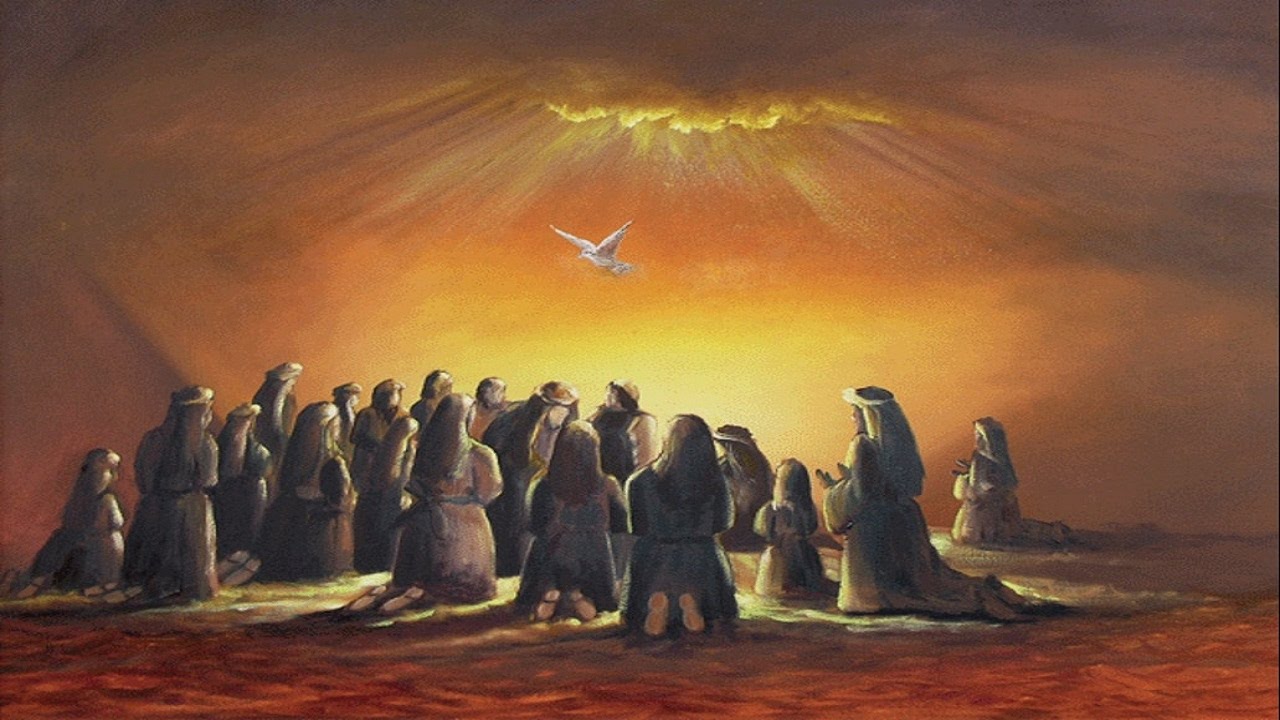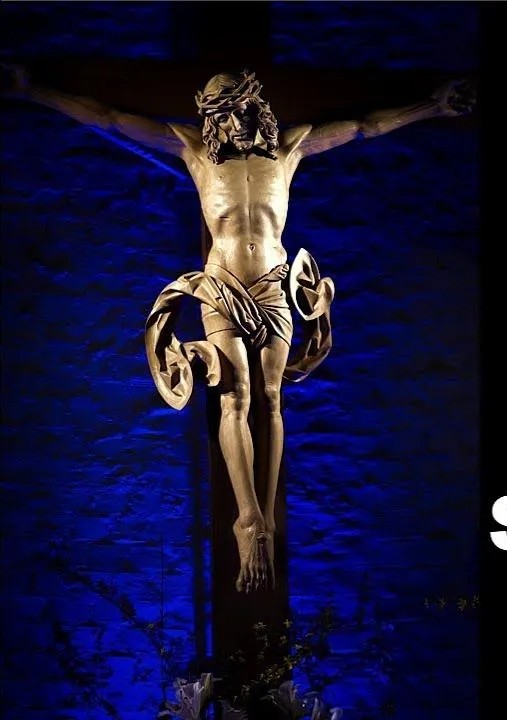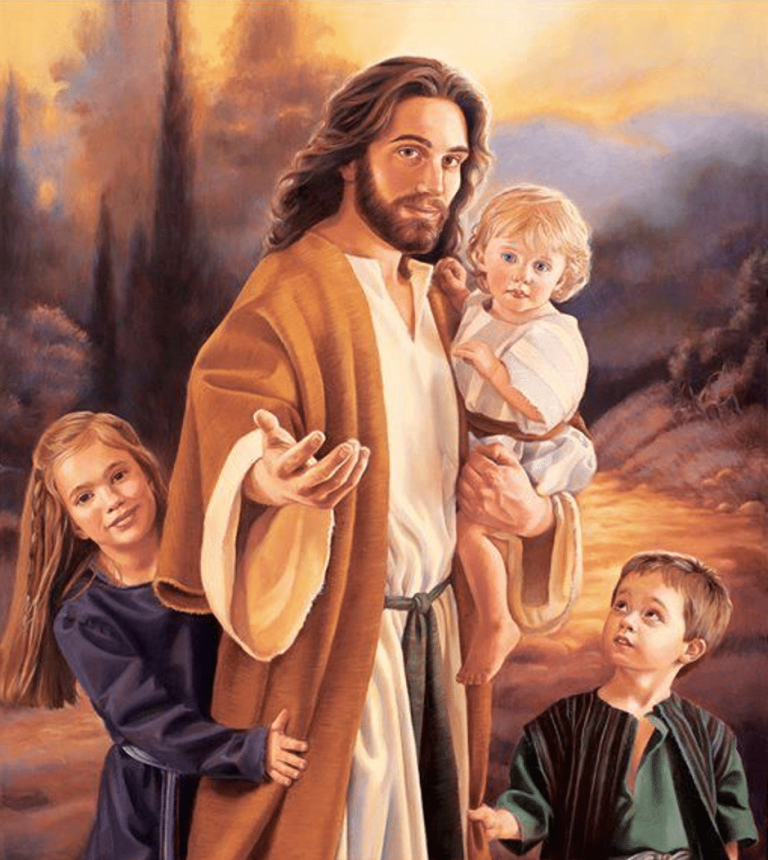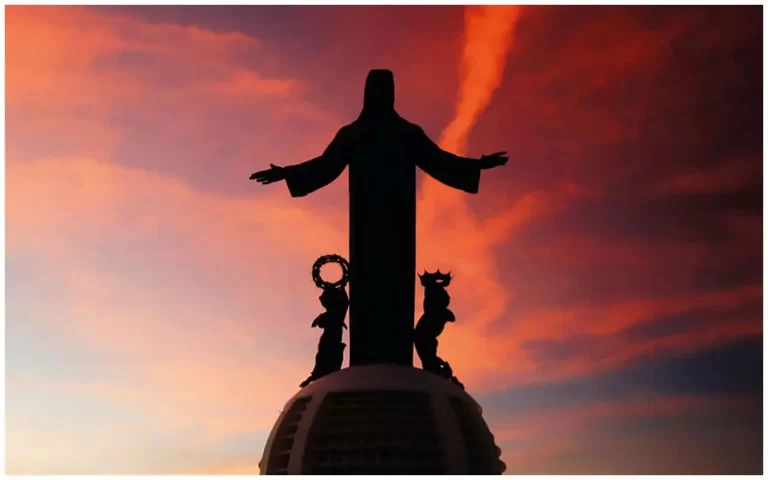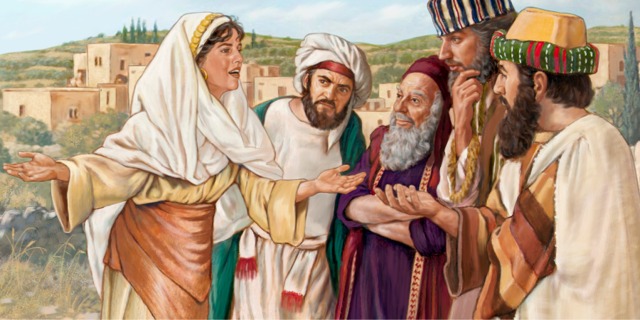Do you know who founded the Pentecostal church? Find out all about her here
The Pentecostal religious movement is a doctrine that is directly related to the evangelical aspects. Find out who founded the Pentecostal church. This type of church works independently but can also be affiliated with other religious organizations. This is financed through the payment of tithes, first fruits and donations.
Who founded the Pentecostal church?
The founder of the Pentecostal church was William Joseph Seymour. This was a pastor of American origin. He took care to start with the religious movement called Pentecostalism.
He was born on May 2, 1870 and died on September 28, 1922. He was the son of a former Louisiana slave. In the year of 1905 he becomes a student of the recently formed seminary that was originated by Charles Fox Parham in the city of Houston.
It was right there that they began their fundamental knowledge of the so-called Holiness movements. On the other hand, he experienced the event of speaking in tongues that evidenced his gifts from the Holy Spirit.
After this he took care of moving to Los Angeles, California. Right in that place he starts his service to the church. It is important to mention that her Pentecostal doctrine was removed from the parish where she originated and named.
In search of continuing his work with God and his children, he looked for a neglected building that was in downtown Los Angeles. Specifically on Azusa Street.
As time passes, he himself dies from a heart attack.
Pentecostal
Pentecostalism, also called the Pentecostal movement. It is considered an evangelical rank movement that is made up within Christian church organizations. This is responsible for emphasizing the beliefs of baptism in the name of Jesus Christ.
His contemporary movement was able to prevail after the so-called Azusa Street Revival movement. This was led by the Afro-American pastor William J. Seymour, under the doctrine of an African Methodist Episcopal church in Los Angeles, California.
This movement begins in 1910. The factors linked to Pentecostalism and Pentecostal are related to the Pentecostal elements. That it is a celebration of Jewish rank that is also known as the Feast of First Fruits. (See Article: Prayer request to God )
Christians consider this event as the commemoration of the resting of the Holy Spirit. Position originates from the disciples of Jesus Christ. This process is emphasized in chapter two of the book of the Acts of the Apostles.
It does not have a world leader, since it has different movements with different beliefs and opinions, always maintaining the main feature of the doctrine and its practices.
There are liturgies and certain other elements of Pentecostal organizations. In the current movements there are four currents of importance that are the historical Pentecostalism, the so-called classic Pentecostalism, the so-called indiciary Pentecostalism and the charismatic movement or neo-Pentecostalism.
Pentecostal ecclesiastical institutions may work independently or may be affiliated with a so-called religious organization. In these the structure has an apostle or minister with wide coverage. They have rites, practices and customs that are linked to the currents with which they identify.
Churches that consider themselves to be Pentecostals finance themselves with the payment of tithes, first fruits and donations. This is done through stock market investments. In addition to this, it is related to various businesses such as the real estate market and telecommunications businesses.
biblical background
People who consider themselves Pentecostals often use the biblical text through quotation and interpretation to justify the beliefs they hold. Among these are those referring to the promise of the outpouring of the Holy Spirit. In addition to this they tell the revelation of John the Baptist, in the Gospel of John.
On the other hand, Jesus and his teachings in the Gospel of Mark, the promise of the father found in the Old Testament. They also believe in power, the passages found in the new testament, the house of Cornelius, the church in Ephesus, and the church in Samaria. (See Article: Psalm 91 of the bible a Prayer of the night )
beliefs
Its fundamental beliefs, despite having a large number of currents and organizations that are part of the Pentecostal movement. All of these have four beliefs in common, which are the following: Jesus Christ is considered the savior. Salvation is also considered a gift given to us by our Lord. This only to those who have true faith. That is why he bestows grace through the crucifixion sacrifice of Jesus.
For the most part, all the slopes believe in the Arminian doctrine that is revealed before the Calvinist doctrine of predestination.
Jesus is in charge of baptizing the beings of faith in the name of the Holy Spirit. This doctrine of baptism is taught and developed by Jesus.
On the other hand, they consider that Jesus heals, through the faith of the sick and their families. In addition to this, after the healing, a promise must be fulfilled, just as Jesus accepted his crucifixion.
In addition to this they consider that Jesus is coming. Pentecostal eschatology is primarily concerned with the soon return of Jesus to earth. This presents two moments, between the rapture of the church of Christ and the return of Jesus through the Great Tribulation.
The Pentecostal church does not have an exact date for this event. These deal with encouraging those who believe in their orientation through a life of consecration, holiness and Christian work.
Believers in the Pentecostal religious branch profess that in order to obtain the benefits of God, it is necessary to be constant and dedicated with religious practices.
-
general beliefs
Christians who develop under the Pentecostal belief are self-styled as monotheists. Those who have the Trinitarian Pentecostal belief are those who believe in the Holy Trinity.
On the other hand, Unitarian Pentecostals do not have that belief. Since he considers that God is the only manifestor, proof of this is that Jesus was the last manifestation of him.
Believers consider the Bible to be the holy book in the Protestant biblical canon. They consider that biblical writing was created by the inspiration of the Holy Spirit. That is why this is the best representation of God. It is an unconditional rule of faith that is believed in the word of God.
Pentecostals, like other Christian and Protestant churches, take original sin into account. Representing her in Satan, Adam and Eve. On the other hand, he believes in the sanctification of the human being if he acts on faith in his life.
They consider themselves to be the church of Christ. They do not have great disagreements with the historic Presbyterian churches or also called Baptist. However, it is important to mention that in some cases Presbyterians do not agree with ecumenism.
Christian eschatology, believe in the parousia or also called the Second Coming of Jesus. On the other hand, they say that at their arrival there will be the events of the rapture of the church, the Great Tribulation, the Millennial Kingdom, Final Judgment, New Jerusalem and resurrection of the dead.
For Pentecostals, God manifests himself in various supernatural ways. As is the case with signs through the performance of wonders, miracles and gifts of wisdom. In addition, the knowledge and ability to heal people, through the miracles of faith.
Some receive prophecies, can discern spirits between Angels or demons, and speak and interpret ancient languages.
Liturgy
The Pentecostal liturgy has characteristic elements according to the church. In addition to this, the current and organization that is related to the Pentecostal religion greatly influences. However, the main activities of the religion are the reading and belief of the Old Testament and New Testament.
When their ceremonies are performed, hymns and songs of praise to our Lord are performed. Its activities are related to different styles, along with live music. In the same way there are applause, choirs, exclamations and dance steps.
On the other hand, they are related to the preaching prayers of the pastors together with their parishioners. Even some ministers or pastors allow parishioners to give their personal testimony. Which lets others know about sanctions and expiation of demons.
Within the ceremonies there are collections of money that the parishioners deliver in various ways, which are the following:
- Tithe, which is made by contributing ten percent of the salaries of its parishioners.
- Firstfruits, the parishioners give him the first fruits of their crops and trees.
- Offerings, through donations that can be optional in cash.
- Promises, relates to the money that parishioners promise according to God that they will give to the church.
- The administration of each income in the same way depends on each ecclesiastical institution. It is necessary to mention that in some cases churches must deliver accounts to religious organizations other than their own.
- On the other hand, there are others that maintain independent administration.
practices and ceremonies
The parishioners of the Pentecostal religion are in charge of carrying out a variety of activities that are cataloged by them as a sacrament. These tasks seek to emulate elementary moments that are reflected in the Bible by our Lord Jesus of Nazareth.
Pastors as well as missionaries have the authority to perform baptisms by immersion. These, unlike Catholics, are carried out mostly in adulthood, thus generating a person’s own will.
Newborns are not baptized, since they are unable to repent of their sins. They only deal with presenting them to the pastor or minister of the church in which they are consecrated.
On the other hand, ministers, pastors and deacons have the possibility of going to representations related to the Holy Supper. In addition to this, for some other believers of the Pentecostal side, they work with the washing of feet. This is done in search of representing humility among their peers.
It is important to mention that Pentecostals are believers in demonic possession and therefore also in exorcisms. These are sustained by them and are executed by believers who are consecrated by God, in addition to this they have to be previously exposed by fasting. (See the article the power of prayer )
For Pentecostals, people are possessed by demonic entities, through esoteric processes or by acts that are considered impure by believers in Christ.
Organization
The Pentecostal church has an organization that stands out for forming various positions and ministries. Their functions differ according to the customs of the church in which they are found.
In addition to this, it is important to mention that the roles of women vary depending on the conditions of the church. In some cases, women have the conditions to act as leaders. The titles are divided into:
Deacons which means helper, is part of the governing body in Pentecostal churches. They are the shepherd’s helpers. They are in charge of making decisions and in addition to that they are in charge of monitoring the safety of the church and pastor.
On the other hand, they are in charge of visiting the sick and the members of the congregation. They minister to believers by laying on of hands. They also deal with praying for the sick, participating in deliverance items, and Holy Communion.
Pentecostals consider that the deacons of early Christianity portrayed in the Bible that women could act as superiors of the church, without any problem.
Apostles, also called messengers, this name is reserved by creationists for the New Testament. However, some call apostles also some current missionaries who according to them represent elements related to the divine hand of God.
On the other hand, there are people who take care of evangelizing. These are considered emerging communities of Christianity. On the other hand, some unitary current churches that are part of the Pentecostals, have leading apostles and consider themselves chosen by God.
These types of currents are structured theocratically. Through the apostles from the top to the bottom of the hierarchy, it is here that apostolic networks are created that are formed into groups within the church.
In their structure they are directed by a single apostle who is in charge of accepting their advice, orientation and mandates. They are believed to possess divine intervention that goes beyond the organization.
The churches that are considered Protestant and above all those related to classical Pentecostal beliefs, are considered Assemblies of God, they do not consider it correct that the apostles are accountable to anyone. That is, there is no control of their actions.
Prophets, these are spiritual spokesmen. Believers in the Pentecostal religion consider them as messengers of God who are directed by the church and deliver messages of the future worldwide.
Those believers considered cessationists reserve this term exclusively for the prophets found in the Bible embodied. However, there are others who believe that there are prophets today.
On the other hand, there are the apostolic networks that have charismatic groups that call prophetic ministries that are considered positions chosen by our Lord.
Evangelists, they consider themselves preachers of good news. In the bible they are described by several evangelists, among them is Jesus Christ himself and the apostle Paul. Currently Pentecostals believe that Christians have to be evangelists, that is why they have the ability to preach the gospel.
His sermons can be public or private. In some cases Pentecostals have held ministries for evangelists who are considered more suitable. In some cases they are criticized because they ask to be hired for services and demand money, an incorrect fact despite their privileges in terms of evangelical activities.
Pastors, are the relevant to bishop. They are also called ministers in some churches. This type of ministry is the most numerous of the Pentecostal religious variants. Their job is to lead, with the goal of caring for believers.
They are in charge of attracting new believers to the church. Conduct is required to be above reproach as they are the representatives of an exemplary believer of the church. In some cases the pastor is the highest authority, which is why they usually have the last word in any decision.
In some cases, Presbyterian churches have a council of elders who are the ones who have the last word. These types of people tend to have Bible studies through religious organizations in some other cases qualified by the ministries. Pastors are charged with baptizing, preaching, and visiting parishioners when they are sick.
Teachers, churches in many cases have teachers who are the equivalent of pastors. These deal with fulfilling a role. They have biblical instructions that they give to their believers.
Branches of Pentecostalism
- Pentecostals of modern classification. It is classified by historical Pentecostalism, classical Pentecostalism, unitary Pentecostalism and what is considered a charismatic movement or also called neo-Pentecostalism.
- Historic Pentecostalism. This type of movement began at the end of the 19th century. Just like at the beginning of the 20th century. His move was made in the United States. They are generated due to the group of Protestants who were rejected because they gave great importance to the gift of language.
The difference between the historical Pentecostal groups is that they believe in the Holy Trinity. While the later ones don’t. (See article Christian prayer for travel )
- classical Pentecostalism. This begins on January 1, 1901 in Topeka Kansas. They have certain aspects similar to those of the historical Pentecostals, since among their doctrine is the belief in the Holy Trinity.
Classical Pentecostals are biblical liberalism, that is, they are very fundamentalist. Among its practices is abstinence from alcohol, tobacco and some other drugs. They are in favor of works against demonic elements and completely disapprove of homosexuality and divorce.
- Oneness Pentecostalism. This beginning in 1913. It is this variant of the Pentecostal evangelical movement that begins to reject the doctrine that believes in the Holy Trinity. Here it begins with the belief of the unitary doctrine.
It is just at this moment when independent groups of churches start with this new doctrine that performs a baptism with water in the name of Jesus. After that in 1914 they have a meeting in Hot Springs, which is called Assembly.
By 1916 there were pastors who were considered more fundamentalist. On the other hand, they moved away from the Assemblies of God. It is just at this moment that they start with the united Pentecostal movement.
charismatic movement. This is also called neo-pentecostalism, it begins in the United States in the 1950s after religious movements that already existed. On the other hand, they also call it the charismatic movement. It is named by the Lutheran Harald Bredesen in 1962.
Among the first participants in this movement is David Duplessis, who was then the minister of the Assembly of God until 1962, as well as the episcopate minister of Dennis Bennett, strove to work revitalizing and renewing the liturgy.
Their religion is critical they do not believe in the same elements of their predecessors, in addition to this they do not take refuge in the bible. The theology he offers is prosperity
Foundation
Most people are unaware of the details of this type of religion, such as the founder, his instilled beliefs and daily customs. His primary belief relates to baptism through the Holy Spirit. He has different beliefs at a general level with the others who believe in Christ.
They may work independently as a church or through a more complex institution. These can be financed through tithes, donations, large real estate deals and telecommunications.
Some consider that the Pentecostal evangelical religion assumes primitive elements of Christianity. Since different languages are handled, which collaborate with the manifestations of the Holy Spirit.
On the other hand, in addition to having skill in languages, they also do so under various manifestations of the Holy Spirit. As well as the ability of prophecy.
These habits were labeled as madness by the emperor Conastino, despite this situation, these practices continued to be commented on. It was not until Agustín de Hispano, that through this he sought to reach glory.
These practices, however, decreased at the time in which the Middle Ages developed, since this period became the most intense with reference to Catholicism.
Martin Luther
Pentecostals consider Martin Luther to be a great evangelist who is cataloged by them as a prophet. That he was sent on a mission to possess the necessary spiritual abilities to create this new religious movement.
Many pastors consider it essential to the exemplification of the abilities that Christianity can bestow. In addition, they believe that their type of beliefs, being so similar to primitive Christianity, is the key to being saved by God and led to eternal life.
The Methodist Church allowed them to understand that early Christianity is not crazy and its message should be spread among all believers of our Lord Jesus Christ. These Methodist movements were the main ones in the creation of the Pentecostal branch, since it was a great influence.
Between 1730 and 1740 the first great awakening begins, which allows all of Europe to know it. This caused the Pentecostal movements to have a considerable impact. At the end of the 18th century and in turn the beginning of the 20th century, the movement began in the United States. This is called the second great awakening by his followers.
It is because the holiness movement begins with its preaching with reference to the doctrine that relates to the Holy Spirit. This is one of the early Pentecostal elements leading to what is known today. Among its essential preachers were Charles Finney and William Arthur. (See article of how many books does the evangelical christian bible have )
The church as a community
This institution is considered a living organism that is capable of large growths. Through members of the religious movement. Church members should be active, always looking for new activities.

Hello! Let me enthusiastically introduce myself as a dedicated blogger fueled by an intense passion for meticulously crafting insightful and well-researched blogs. My mission revolves around providing you, dear readers, with a veritable treasure trove of invaluable information.

